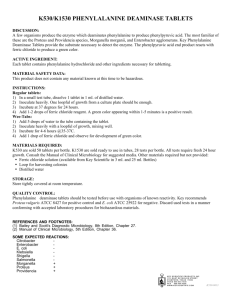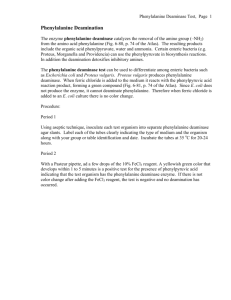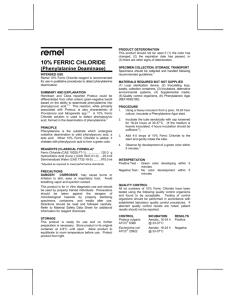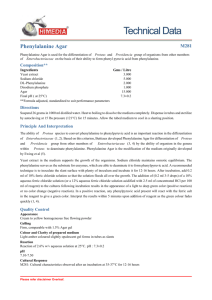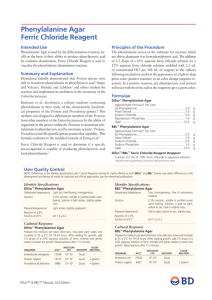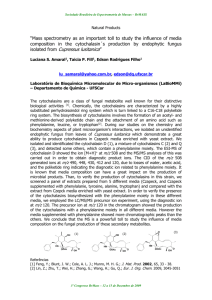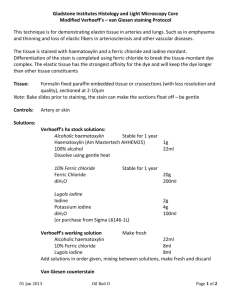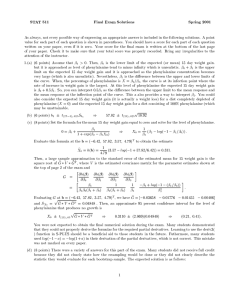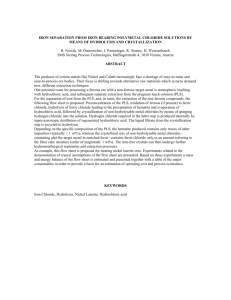RF40-25
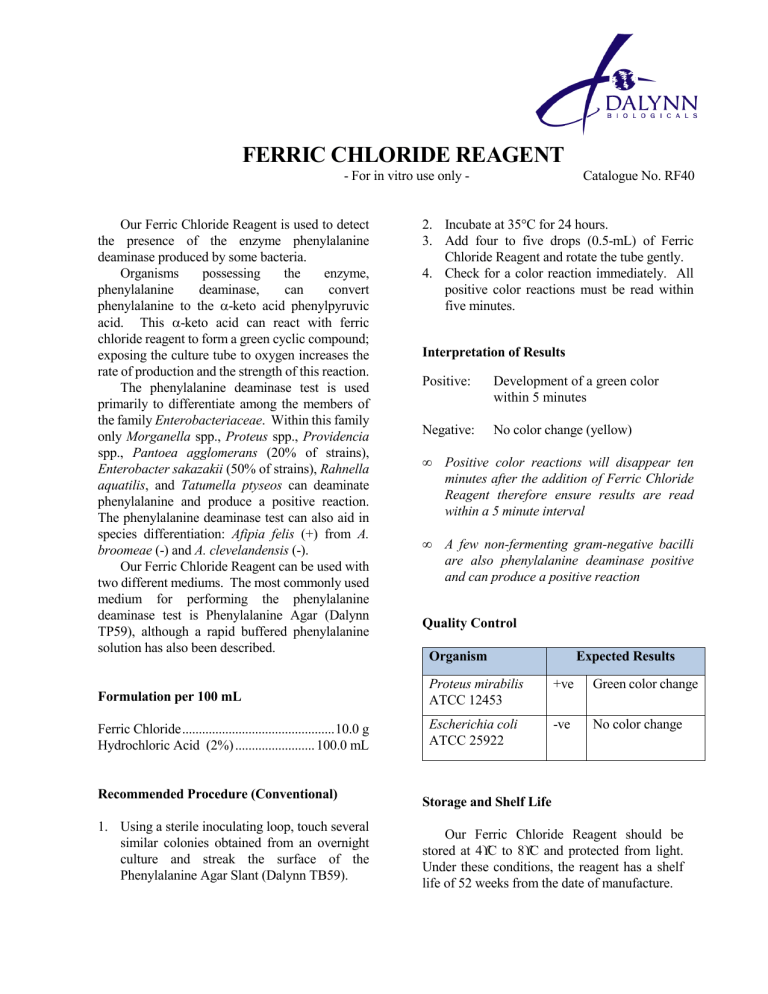
FERRIC CHLORIDE REAGENT
- For in vitro use only -
Our Ferric Chloride Reagent is used to detect the presence of the enzyme phenylalanine deaminase produced by some bacteria.
Organisms possessing the enzyme, phenylalanine deaminase, can convert phenylalanine to the
α
-keto acid phenylpyruvic acid. This
α
-keto acid can react with ferric chloride reagent to form a green cyclic compound; exposing the culture tube to oxygen increases the rate of production and the strength of this reaction. five minutes.
Interpretation of Results
Catalogue No. RF40
2.
Incubate at 35°C for 24 hours.
3.
Add four to five drops (0.5-mL) of Ferric
Chloride Reagent and rotate the tube gently.
4.
Check for a color reaction immediately. All positive color reactions must be read within
The phenylalanine deaminase test is used primarily to differentiate among the members of the family Enterobacteriaceae. Within this family
Positive: Development of a green color within 5 minutes only Morganella spp., Proteus spp., Providencia spp., Pantoea agglomerans (20% of strains),
Enterobacter sakazakii (50% of strains), Rahnella
aquatilis, and Tatumella ptyseos can deaminate
Negative: No color change (yellow)
•
Positive color reactions will disappear ten minutes after the addition of Ferric Chloride phenylalanine and produce a positive reaction.
The phenylalanine deaminase test can also aid in species differentiation: Afipia felis (+) from A.
broomeae (-) and A. clevelandensis (-).
Our Ferric Chloride Reagent can be used with two different mediums. The most commonly used medium for performing the phenylalanine deaminase test is Phenylalanine Agar (Dalynn
TP59), although a rapid buffered phenylalanine
Reagent therefore ensure results are read within a 5 minute interval
•
A few non-fermenting gram-negative bacilli are also phenylalanine deaminase positive and can produce a positive reaction
Quality Control solution has also been described.
Organism Expected Results
Formulation per 100 mL
Ferric Chloride .............................................. 10.0 g
Hydrochloric Acid (2%) ........................ 100.0 mL
Recommended Procedure (Conventional)
1.
Using a sterile inoculating loop, touch several similar colonies obtained from an overnight culture and streak the surface of the
Phenylalanine Agar Slant (Dalynn TB59).
Proteus mirabilis
ATCC 12453
Escherichia coli
ATCC 25922
+ve Green color change
-ve No color change
Storage and Shelf Life
Our Ferric Chloride Reagent should be stored at 4
°
C to 8
°
C and protected from light.
Under these conditions, the reagent has a shelf life of 52 weeks from the date of manufacture.
References
1.
Henriksen SD, Closs K. The production of phenylpyruvic acid by bacteria. Acta Pathol
Microbiol Scand 1938; 15:101-13.
2.
Henriksen SD. A comparison of the phenylalanine acid reaction and the urease test in the differentiation of Proteus from other enteric organisms. J Bacteriol 1950;
60:225-31.
3.
Stewart DJ. The phenylalanine test on
Kligler’s iron agar for the identification of
Proteus. Nature 1959; 183:1537-8.
4.
Isenberg HD, Ed. Clinical microbiology procedures handbook, Vol I. Washington,
DC: ASM, 1992.
5.
MacFaddin JF. Biochemical tests for identification of medical bacteria. 3 rd
ed.
Philadelphia: Lippincott Williams &
Wilkins, 2000.
Original: April 2002
Revised / Revisited: October 2014
